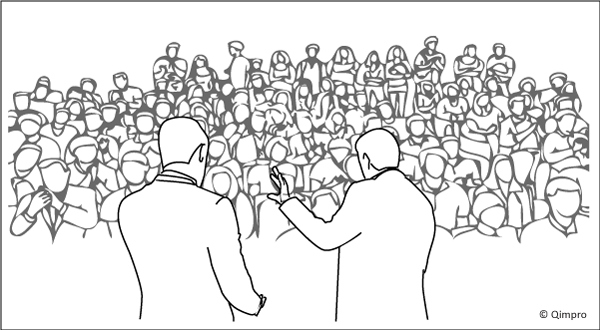Quality needs no Passport

This article appeared in ‘Quality India’ magazine (A QCI publication), July-September 2018.
This is truly a Quality Fable. It is a story I have fabricated using a little bit of this; and a little bit of that.
During the 1973 Arab-Israeli War, Arab members of the Organization of Petroleum Exporting Countries (OPEC) imposed an embargo against supporters of Israel. The embargo not only banned the export of petroleum to the targeted nations, but also introduced cuts in oil production. Consequently, there was an upward spiral in oil prices that impacted national economies, globally.
At first the price of oil per barrel doubled. Then quadrupled. Then even more. This imposed skyrocketing costs on consumers for basic day-to-day living. It even challenged the economic stability of several nations.
The US was hit badly. Over the years, the country had become increasingly dependent on foreign oil. With spiraling price of petrol, the demand for American petrol guzzling cars crashed. This resulted in unemployment. In Detroit, particularly.
The Japanese car manufacturers saw an opportunity. They had mastered the science of Quality Management. It is now referred to as The Toyota Way. They had also mastered the science of manufacturing low-cost four-cylinder fuel efficient cars. Toyota Corolla and Datsun 510, more precisely
These Japanese car manufacturers chose to acquire some of the ailing American auto units in Detroit. They invested money. They also gave back jobs to the American auto workers. As is well known, the auto industry was the backbone of the US economy. There used to be a saying: What’s good for General Motors, is good for the American economy.
The following is an imagineered interaction with an ailing American auto unit.
On the first day, all workers (current and sacked) were requested to assemble in a large hall. Two Japanese managers were to address them. In keeping with tradition the address was precise.
The first started with: “Your jobs are secure for the next ten years”. The de-motivated employees seemed to have woken up with this electric shock. All this in a hire-fire economy!
“However, you will now have to manage the 100 square feet you occupy. So, as a first step, as you leave the room, I am requesting my colleague (bowing to the second manager) to distribute a can of white paint and a brush to each of you. Go tidy up the space you occupy”.
A week later, the plant looked as sparkling white as an operation theatre. Gone were the days of battle ground dark colors. That was the first lesson the workers learned on Quality Management: Housekeeping practices to build a quality culture. Cleanliness sensitizes workers to detect errors.
The following week, the two managers again assembled the workers in the same hall. The hall had been painted by this Japanese twosome.
“Have there been any accidents in the plant?” Long silence. Finally, an episode.
“Oh you mean there’s been an incidence of eye-burn last year. That should never happen.”
Following this interaction, the two managers nominated themselves to a team and requested the Plant-In-Charge, Human Resource Manager, Maintenance Manager, and a worker to join in. This team of seven jointly addressed the eye-burn problem using the Juran methodology: Symptom to Cause to Remedy. The second lesson was successfully demonstrated: Safety. Accidents occur when something fails. A failure is a flag for poor quality.
The by-product of the first two lessons were subtle but most important. Give back dignity to the workers.
The Japanese had softly demonstrated through three actions: We care.
By now the workers were actually enjoying coming to work. They arrived earlier, just-in-case, and did not hesitate to complete their assigned tasks before leaving for the day. They had migrated from clock-watchers to task-achievers.
With some acquired American humor, the Japanese twosome pointed out that the material flow in the plant was like spaghetti.
Let us streamline the flow for minimal human intervention. Industrial engineers took charge. The plant was shut for 30 days to improve the flow of material.
How were the workers engaged? They were taught Problem Solving and the application of Quality Tools!!
The Japanese twosome had demonstrated that Quality Management is agnostic to national cultures. The American auto units once again delivered successful outcomes, the Japanese way.
Lessons Learned
- Challenges can be met through Quality Management
- Quality Management is not capital intensive
- Build a quality culture through Housekeeping
- Build a quality culture through Safety
- Treat the workers with dignity
- Higher human intervention in a process increases the opportunities for failures
- Leaders should work on important problems
